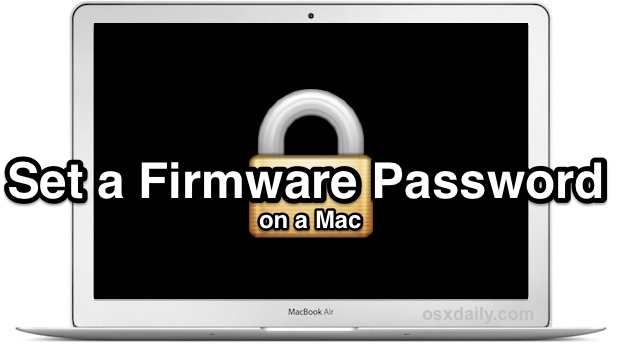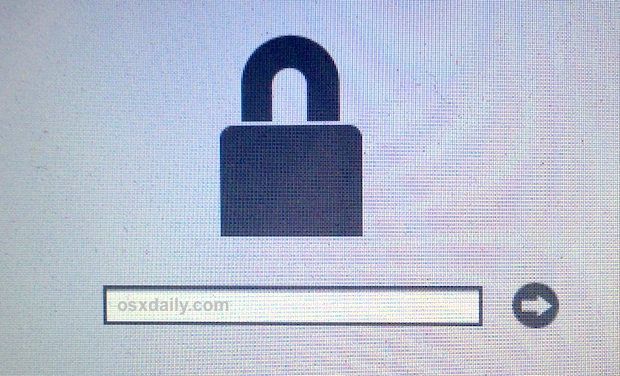Mac Does Not Respond to Firmware Password

Mac users in higher security adventure situations may wish to enable an optional firmware password on their machines,which offers an advanced level of protection. In brusk, a firmware password is a lower level layer of security that is set on the actual Mac logicboards firmware, rather than at the software layer like
FileVault
encryption or the standard login password. The effect of setting an EFI password is that a Mac tin can not be booted from an external kicking volume, unmarried user style, or target disk mode, and it besides prevents resetting of PRAM and the ability to boot into Safe Way, without logging in through the firmware countersign offset. This effectively prevents a broad diverseness of methods that could potentially be used to compromise a Mac, and offers exceptional security for users who require such protection.
Important:
Like any other essential password, use something memorable only circuitous, and
do non forget a firmware countersign
after it has been set. A lost firmware countersign is unrecoverable on near modern Macs without a visit to an Apple tree Shop or sending a Mac into Apple Support for service and recovery. Older Mac models may be able to use a
hardware intervention method
to bypass firmware passwords, but these methods are not possible on new Macs without access to removable batteries or memory modules, thus the visit to Apple.
How to Fix a Firmware Password on a Mac
Setting a firmware password is rather simple, though it’s handled slightly differently in macOS Mojave, MacOS Loftier Sierra, MacOS Sierra, OS X El Capitan, Bone 10 Yosemite, and OS 10 Mavericks than it was in earlier versions of Mac OS 10.
- Reboot the Mac, and hold downward Command+R to boot straight into Recovery Mode
- At the Bone X Utilities splash screen, pull downward the “Utilities” card bar and choose “Firmware Password Utility”
- Choose “Plow On Firmware Password”
- Enter the password twice to confirm, then cull “Prepare Password” to assign to assign that password to the Mac – do not forget this password or you lot may lose access to the Mac
- Choose “Quit Firmware Password Utility” to ready the EFI password



With the firmware password ready, you can reboot the Mac as usual. For whatsoever standard boot or restart, the Mac will boot into macOS Ten as usual, and go directly to the normal Mac OS X login screen.
When / Where the Firmware Countersign is Visible on Mac
The firmware password will not announced during a regular restart or boot of the Mac, it simply becomes mandatory when the Mac is attempted to boot from alternating methods. This may exist in situations where a Mac is attempted to boot from an Mac Os X installer bulldoze, an external boot volume,
Recovery Fashion, Single User Way,
Verbose Mode, Target Disk Mode, resetting the PRAM, or any other alternative booting approach that will summon the rather plain looking firmware password window. There are no countersign hints or additional details provided, only a elementary lock logo and a text entry screen.

An incorrectly entered firmware password does nix and offers no indication of login failure except that the Mac won’t kick as predictable.
Note that all modern Intel-based Macs refer to firmware passwords as EFI (Extensible Firmware Interface) passwords, while older Macs referred to them equally Open up Firmware. The full general concept remains the same, simply different hardware.
Should You lot Use a Firmware Countersign on Your Mac?
Most Mac users will find a firmware password an unnecessarily heightened security precaution, and using this feature is best limited to Mac users in higher risk environments where having maximum security is a requirement. For the average Mac user, a standard boot login hallmark and
screen saver password
is usually sufficient protection, while
enabling FileVault disk encryption
tin can offer additional security benefits to users who want their files and data protected from unauthorized access. FileVault can also exist used as a means of
preventing transmission resetting of business relationship passwords
on Macs within higher security risk environments, just every bit several readers
pointed out
in the comments, the firmware protection should also exist used in high security situations.

